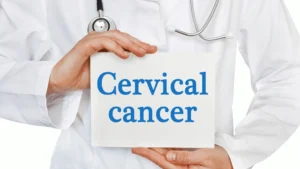Which STIs?
Sexually transmitted infections (STIs) are a serious health concern, and some can increase the risk of developing cervical cancer. The two most significant STIs linked to cervical cancer are human papillomavirus (HPV) and chlamydia. It is important to understand the connection between these infections and cervical cancer to take appropriate measures for prevention and early detection.

HPV and cervical cancer
HPV is the primary STI associated with almost all cases of cervical cancer. There are different strains of HPV, with certain high-risk types posing a greater threat. For most individuals, their immune system clears the virus without causing any symptoms or complications. However, in some cases, the infection persists, leading to abnormal cell growth in the cervix over time. Regular screening, such as Pap tests and HPV testing, can help detect early signs of cervical cancer and timely intervention to reduce the risk of progression.
Next steps
If you suspect you may have been exposed to an STI, especially HPV or chlamydia, it is essential to consult with a healthcare professional. They can guide you through the appropriate tests and procedures to identify and manage any potential risks. In the case of HPV, vaccines are available to protect against certain high-risk strains, offering an effective preventive measure. Additionally, practicing safe sex, including consistent condom use, can significantly reduce the transmission of STIs and decrease the chances of developing cervical cancer.
Other causes
While HPV and chlamydia are the most common STIs linked to cervical cancer, it is important to understand that other factors can also contribute to its development. Smoking, a weakened immune system, hormonal imbalances, sexual activity at an early age, a history of multiple sexual partners, and a family history of cervical cancer may increase the risk. Therefore, maintaining a healthy lifestyle, avoiding risky behaviors, and attending routine check-ups are crucial to reducing the overall risk of cervical cancer.
Cervical cancer symptoms
Cervical cancer often shows no noticeable symptoms in its early stages, which is why regular screenings are vital. However, as the disease progresses, certain signs may become apparent. Symptoms of cervical cancer can include abnormal vaginal bleeding, increased vaginal discharge, pelvic pain, discomfort during intercourse, and urinary problems. It is important to note that these symptoms can also be caused by other conditions, so consulting a healthcare professional is essential for accurate diagnosis and appropriate treatment.
FAQ
- Can men get cervical cancer? No, cervical cancer only affects individuals with a cervix, which includes cisgender women and transgender men.
- Can condoms fully protect against STIs? While condoms are highly effective, they do not provide 100% protection against all STIs, especially those transmitted through skin-to-skin contact like HPV. Nevertheless, consistent condom use can significantly reduce the risk of infection.
- Is cervical cancer always caused by an STI? No, although certain STIs increase the risk, other factors such as lifestyle choices and genetic predisposition can also lead to the development of cervical cancer.
Summary
Several STIs can increase the risk of cervical cancer, with human papillomavirus (HPV) being the most significant. Regular screenings, vaccination against high-risk HPV strains, and practicing safe sex are key preventive measures. It is essential to understand that cervical cancer can also be influenced by other factors, such as smoking, weakened immune systems, and early sexual activity. Recognizing symptoms and seeking timely medical attention is crucial for early detection and intervention. By staying informed and taking appropriate measures, we can work towards reducing the incidence of cervical cancer and protecting our overall well-being.
Introduction
Cervical cancer is a serious health condition, and understanding its causes and risk factors is crucial for prevention and early detection. This article explores the connection between sexually transmitted infections (STIs) and cervical cancer. Specifically, it delves into the impact of human papillomavirus (HPV) and other factors, the associated symptoms, and provides answers to frequently asked questions. By educating ourselves on the risks and taking proactive measures, we can work towards reducing the incidence of cervical cancer.
Conclusion
Being aware of the STIs that can increase the risk of cervical cancer is vital for individual health and well-being. Human papillomavirus (HPV) and chlamydia are prominent STIs associated with cervical cancer, and early detection through regular screenings is crucial. Additionally, maintaining a healthy lifestyle, practicing safe sex, and seeking medical attention for symptoms are essential steps in reducing the overall risk of cervical cancer. By taking a proactive approach, we can protect ourselves and promote a healthier future.